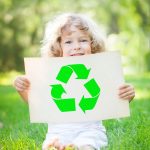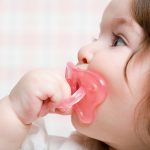 Throughout ages 25-36 months, toddler speech development becomes quite fascinating! They’re not only learning to communicate, but also to listen more and observe the world around them.
Throughout ages 25-36 months, toddler speech development becomes quite fascinating! They’re not only learning to communicate, but also to listen more and observe the world around them.
Of course, toddlers develop speech and language skills at different paces, so it shouldn’t be a cause for concern if some of your little one’s peers seem a bit more advanced. That said, it’s still important for parents and caregivers to be aware of speech-related red flags. Some for this age range are:
- Does not use unique two-word phrases, including noun-verb combinations
- Does not verbally respond or nod/shake head to questions
- Has regressed or lost previously acquired speech/language skills
It’s important to consult with your pediatrician or a pediatric speech-language pathologist if you’re concerned about your child’s speech development.
Highlights:
|
Here’s a snapshot of how toddler speech typically evolves from ages 25-36 months:
25-27 Months
Your toddler’s vocabulary will expand quickly during months 25-27. In fact, he might start using words you didn’t even realize he knew! That’s because he’ll pick up on words and phrases that he hears adults use, and find a way to use them himself. He’ll be able to actively listen to conversations for about 3-6 minutes, so this is a great time to take advantage of small talk to give his speech and social skills a boost. Toddlers at this age can answer simple ‘what’ and ‘where’ questions, and even respond to questions like, “How old are you?” or “What’s your doggie’s name?” He’ll show off his early literacy skills, too, by describing characters from his favorite book, or answering questions about the storyline.
28-30 Months
At this time, you’ll begin to see how receptive your little one has become! He might start to pick up on context clues when listening to others. For instance, if he hears you say: “Where are my keys,” he may jump up and help you look for them. He’ll continue to master answering ‘what’ and ‘where’ questions, but now he’ll move on to asking ‘what’ and ‘where’ questions of his own. As he engages in more conversations, you’ll notice his conversational skills improve. For instance, he may join a conversation in progress with a relevant question or statement. Overall, there will be a noticeable increase in his eagerness to verbally interact.
31-33 Months
Throughout months 31-33, your toddler will start using attention-grabbing words like “Hey!” or “Look!” when he sees something exciting that he wants to share. Toddlers at this age are also famous for keeping you in a conversation by simply repeating what you just said. He’ll be able to describe actions or objects with more clarity, and start telling stories with themes. There may not be a clear plot to his story, but the descriptive words are starting to sink in. You’ll also hear him combining noun and verb phrases together (“I eat big cookie!”) which will gradually lead to longer sentences. He’ll ask simple ‘who,’ ‘when,’ and ‘how’ questions and answer simple ‘why’ questions. Even though his vocabulary is expanding at this time, he’ll still misarticulate some words (say “bue” instead of “blue,” or “du” instead of “duck,” for example).
34-36 Months
Throughout these months, your toddler will become quite the wordsmith and he’ll be very excited about that! He’ll be eager to use his new words, play word or alphabet games, and ask a lot of questions. He’ll start to pronounce f, s, and y more clearly. Shorter word versions will also start to disappear (saying “umbrella” instead of “brella”). As the concept of time is slowly starting to form, he’ll begin to incorporate the past tense into conversations and even refer to acts happening in the future (talk about going to see grandma tomorrow). One of the most thrilling parts of this phase is that others will be able to understand about 75% of what he’s saying! His big-kid voice is starting to take shape and he’s ready to tell the world about it.
If you’re looking for fun speech and language activities for your tiny talker, you can find hundreds of them in the speech category of the BabySparks program.








